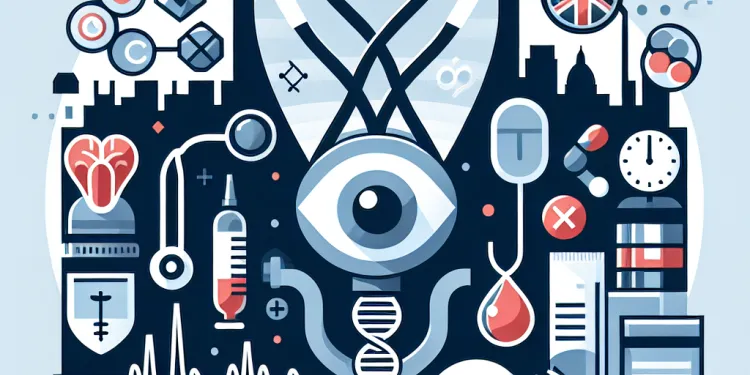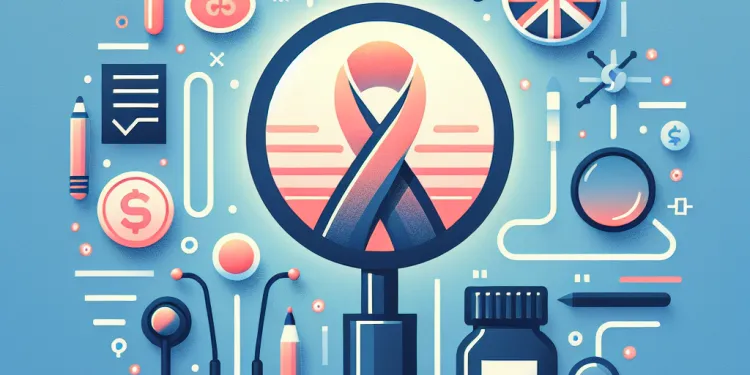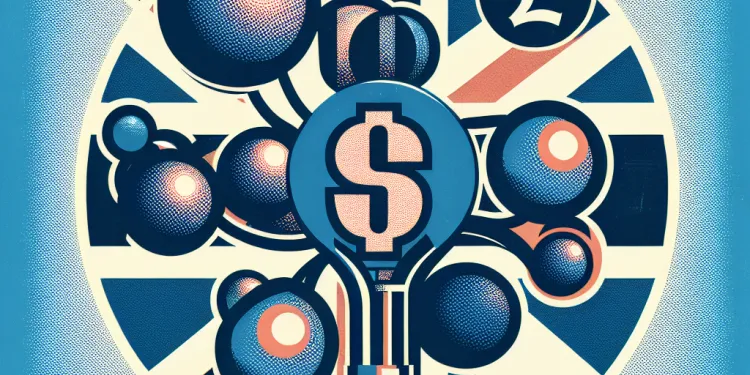
Find Help
More Items From Ergsy search
-

What is a seminoma?
Relevance: 100%
-

What's the difference between seminomas and non-seminomas?
Relevance: 88%
-

What is testicular cancer?
Relevance: 33%
-

What is the survival rate for testicular cancer?
Relevance: 32%
-

Can testicular cancer recur after treatment?
Relevance: 28%
-

What role do tumor markers play in testicular cancer?
Relevance: 26%
-

What is testicular cancer?
Relevance: 23%
-

Is testicular cancer treatable?
Relevance: 22%
-

Can testicular cancer spread to other parts of the body?
Relevance: 17%
-

What types of treatments are available for testicular cancer?
Relevance: 17%
Introduction to Seminoma
A seminoma is a type of testicular cancer that arises from germ cells, the cells responsible for producing sperm. It is one of the most common forms of testicular cancer, particularly affecting younger men between the ages of 15 and 35. This type of cancer is generally considered to be highly treatable with a good prognosis when detected early.
Causes and Risk Factors
While the exact cause of seminoma is not entirely understood, several factors are known to increase the risk. Having undescended testicles, a condition known as cryptorchidism, significantly raises the chances of developing this cancer. A family history of testicular cancer, particularly among first-degree relatives, may also contribute to increased risk. Additionally, Caucasian men are statistically more likely to develop seminomas compared to men of other ethnicities.
Symptoms
The symptoms of seminoma can often be subtle and may not be immediately recognizable. Common signs include a painless lump or swelling in the testicle, a feeling of heaviness or aching in the scrotum, and occasionally pain or discomfort in the testicle or scrotum. In some cases, men may experience back pain, which can indicate that the cancer has spread to lymph nodes in the abdominal area.
Diagnosis
Diagnosis of seminoma typically involves a physical examination, followed by an ultrasound of the testicles to identify any abnormalities. Blood tests may be conducted to measure levels of tumour markers such as alpha-fetoprotein (AFP) or human chorionic gonadotropin (HCG), which can be elevated in the presence of testicular cancer. Ultimately, the definitive diagnosis is often confirmed through surgical removal and microscopic examination of the affected testicle.
Treatment
Treatment for seminoma generally includes surgery, radiation therapy, and sometimes chemotherapy, depending on the stage and spread of the cancer. The first line of treatment is usually an orchiectomy, the surgical removal of the affected testicle. If the cancer has spread beyond the testicle, further treatments may include radiation to eliminate any remaining cancer cells and chemotherapy to address widespread disease.
Prognosis
The prognosis for seminoma is generally very positive, particularly when caught early. Survival rates are high, with many men achieving full recovery and leading normal lives post-treatment. Regular follow-up is essential to monitor for any recurrence, and lifestyle modifications, such as a healthy diet and smoking cessation, can help improve overall outcomes.
Conclusion
In conclusion, seminoma is a type of testicular cancer that is highly treatable when detected promptly. Awareness of the risk factors and symptoms can aid early diagnosis, ensuring more effective treatment. Men are encouraged to undertake regular self-examinations to detect any unusual changes and seek medical advice promptly. Overall, the advances in treatment and early detection make seminoma a cancer with one of the highest cure rates.
What is Seminoma?
Seminoma is a kind of cancer in the testicles. These are the body parts that make sperm. Seminoma happens mostly in young men who are 15 to 35 years old. It is a common cancer but can be treated well if found early.
What Causes Seminoma?
We do not know exactly why seminoma happens. It may be more likely if your testicles did not drop down when you were a baby. If someone in your family had testicular cancer, your risk might be higher too. Seminoma is more common in white men.
Signs of Seminoma
You might not notice seminoma at first. It can make a lump or swelling in your testicle. Your testicle or scrotum might feel heavy or hurt a bit. Sometimes, your back might hurt too. This can mean the cancer has spread.
How Doctors Find Seminoma
Doctors check for seminoma by looking at your testicles and using an ultrasound. They might do blood tests to check for special signs of cancer. Sometimes, they need to take out the testicle to look at it closely to be sure.
How is Seminoma Treated?
Treating seminoma usually starts with surgery to remove the testicle. If cancer has spread, doctors might use radiation or medicine (called chemotherapy) to treat it. The treatment depends on how much the cancer has spread.
What Happens After Treatment?
Most men with seminoma get better, especially if it is treated early. Many men go back to normal life after treatment. It is important to see your doctor regularly to check for cancer coming back. Eating healthy and not smoking can help you feel better.
Summary
Seminoma is a testicular cancer that can be treated well, especially if found early. Knowing the signs and risk factors can help. Men should check their testicles regularly for changes and see a doctor if something does not feel right. With today's treatments, seminoma can often be cured.
Frequently Asked Questions
What is a seminoma?
Seminoma is a type of testicular cancer that originates from germ cells in the testes.
Is seminoma common?
Seminoma is a common form of testicular cancer, typically affecting young and middle-aged men.
What are the symptoms of seminoma?
Symptoms may include a lump in the testicle, testicular swelling, discomfort or pain in the scrotum, and occasionally abdominal or back pain.
How is seminoma diagnosed?
Diagnosis may involve a physical exam, ultrasound imaging, blood tests for tumor markers, and sometimes biopsy or surgery.
What are the stages of seminoma?
Seminoma is typically classified into three stages: Stage I (localized), Stage II (spread to lymph nodes), and Stage III (spread beyond lymph nodes, potentially to lungs or other organs).
What are the treatment options for seminoma?
Treatment options may include surgery to remove the affected testicle (orchiectomy), radiation therapy, and chemotherapy depending on the stage.
What is the prognosis for seminoma?
The prognosis for seminoma is generally very good, especially when detected early, with high cure rates.
Can seminoma affect both testicles?
It is rare for seminoma to affect both testicles, but it can happen.
What causes seminoma?
The exact cause of seminoma is not well understood, but risk factors include undescended testis and family history.
Can seminoma spread to other parts of the body?
Yes, seminoma can metastasize, most commonly to lymph nodes, lungs, liver, and sometimes bones.
How often should men check for signs of seminoma?
Regular self-exams of the testicles can help detect lumps early; medical checkups are advisable if any changes are noticed.
Is family history a risk factor for seminoma?
Yes, having a family history of testicular cancer can increase the risk of developing seminoma.
What role do tumor markers play in diagnosing seminoma?
Tumor markers such as Beta-HCG and LDH can help in diagnosing and monitoring treatment response in seminoma.
Are there any lifestyle changes that can help prevent seminoma?
While specific prevention methods for seminoma are not well-established, maintaining regular health checkups and being aware of risk factors can be beneficial.
Can seminoma be treated with radiation therapy?
Yes, radiation therapy is often used to treat seminoma, particularly for early-stage and localized cases.
Is chemotherapy effective in treating seminoma?
Chemotherapy is effective in treating seminoma, especially in advanced stages or when the cancer has spread.
What follow-up care is recommended after seminoma treatment?
Regular follow-up exams, imaging tests, and blood tests are recommended to monitor for recurrence and manage any long-term side effects.
Can seminoma occur after puberty?
Yes, seminoma is most commonly diagnosed in men aged 15 to 35, but it can occur at any age after puberty.
Is there a link between HIV and seminoma?
Men with HIV have an increased risk of developing testicular cancer, including seminoma.
Can fertility be affected by seminoma treatment?
Treatment for seminoma, particularly chemotherapy and radiation, can affect fertility, so sperm banking may be recommended before starting treatment.
What is a seminoma?
A seminoma is a type of cancer. It starts in the testicles.
If you want to learn more, you can:
- Ask a doctor.
- Look at pictures or videos about it.
- Use apps that read things aloud.
Seminoma is a cancer that starts from cells in the testicles.
Is seminoma common?
Seminoma is a type of cancer. It starts in the testicles. This kind of cancer is more common in young men. But it is not the most common type of cancer.
If you want to know more, you can ask a doctor. You can also look at websites for people who have cancer.
Using tools like audio books or talking to someone can help you understand more.
Seminoma is a type of cancer that happens in the testicles. It usually affects boys and men who are young or in the middle-aged group.
What signs show someone might have seminoma?
The signs might be:
- A lump or bump in the testicle.
- Swelling in the testicle.
- Feeling pain or discomfort in the scrotum.
- Sometimes, there might be pain in the belly or back.
If you notice these signs, it can help to use pictures or videos to understand more. You can also ask someone you trust to help you read. Talking to a doctor is a good idea if you feel worried.
How do doctors find out if someone has seminoma?
If doctors think you might have seminoma, they will do some tests. These tests help find out if seminoma is in your body.
Here are some tests doctors might use:
- Blood Test: Doctors take a little bit of blood from you. They look at your blood to find special signs of seminoma.
- Ultrasound: Doctors use a machine to look inside your body. It uses sound waves to make pictures. This helps doctors see if something is wrong.
- CT Scan: This is like taking a special picture of your body with a computer. It helps doctors look for seminoma.
If you find this hard, ask someone you trust or a doctor to help explain.
To find out what is wrong, doctors might:
- Check your body with a physical exam.
- Take pictures inside your body with an ultrasound.
- Do blood tests to look for signs of a problem.
- Sometimes, take a small piece from inside your body, called a biopsy.
- They might do surgery to see what's going on.
What are the stages of seminoma?
Seminoma is a type of cancer. It happens in the testicles. Doctors use "stages" to talk about how much the cancer has spread. Here are the stages:
Stage 1: The cancer is only in the testicle. It hasn't moved anywhere else.
Stage 2: The cancer has moved to the lymph nodes in the belly area. Lymph nodes are small, bean-shaped parts of the body that help fight germs.
Stage 3: The cancer has spread to other parts of the body. This can be areas like the lungs or liver.
If you have questions or need help, ask a doctor or nurse. They can explain things. You can also use pictures or videos to understand better.
Seminoma is a type of cancer. It has three stages:
Stage I: The cancer is only in one area.
Stage II: The cancer has spread to the small glands in your body called lymph nodes.
Stage III: The cancer has spread further. It might be in the lungs or other parts of the body.
If you find this hard to read, you can try using a reading app that reads it out loud for you. It might help to talk to a doctor or nurse about it, too.
What are the ways to treat seminoma?
Treatment choices can be:
- Surgery to take out the sick testicle.
- Using strong rays to kill cancer cells (radiation therapy).
- Using medicine to kill cancer cells (chemotherapy).
The doctor will choose based on how far the cancer has spread.
What happens if you have seminoma?
If you have seminoma, it means you have a type of cancer. Doctors are really good at treating this kind of cancer.
Most people get better after treatment. It is important to see your doctor so they can help you. You can ask questions if you feel worried.
To help understand more, you can use:
- Pictures or diagrams
- A friend or family member to talk with
- Easy books or videos about cancer
Semenoma is a type of cancer. Doctors can usually cure it, especially if they find it early. This means people can get better and live healthy lives.
If you need help understanding words, you can use a dictionary or ask someone to explain. It might also help to read slowly and take breaks.
Can seminoma happen in both testicles?
It is not common for seminoma to be in both testicles, but it can happen sometimes.
What makes seminoma happen?
Siminoma is a kind of cancer in the testicles. We don't know exactly why it happens, but some things can make it more likely. If you have a history of this cancer in your family, it can be one reason. Having testicles that did not move down into the scrotum when you were a baby could be another reason.
To understand more, you can talk to a doctor. They can answer questions and help explain things better. You can also use a computer to find websites with easy information about seminoma.
The exact reason why seminoma happens is not known. But some things can make it more likely, like if the testicles have not moved down, or if someone in your family had it.
Can seminoma move to other parts of the body?
Seminoma is a kind of cancer. Cancer can sometimes move to new places in the body. This is called spreading.
If you or someone you know has seminoma, it is important to talk to a doctor. They can give you more information and help.
Using pictures or videos can help you learn more about seminoma. You can also ask a friend or family member to help you understand.
Yes, seminoma can spread to other parts of the body. It often goes to the lymph nodes, lungs, liver, and sometimes the bones.
How often should men check for signs of seminoma?
Men should check their testicles for signs of seminoma once a month. It helps find any lumps or changes early.
Try using a mirror to see better. You can also ask your doctor for help and advice.
It's important to check your testicles often. This way, you can find any lumps or changes early. If you notice anything different, it's a good idea to see a doctor.
Can family history make seminoma more likely?
Yes, if someone in your family has had testicular cancer, it can make it more likely for you to get a type of cancer called seminoma.
What do tumor markers do in finding seminoma?
Tumor markers are special signs in the body that can show if there is cancer.
When doctors look for seminoma, which is a type of testicular cancer, they check these signs.
Tumor markers help doctors see if seminoma is there. They can also help doctors understand how well treatment is working.
Using pictures and diagrams can help explain how tumor markers work. Working with a supportive doctor or nurse can be very helpful.
Tumor markers are special signs in the body that help doctors. Beta-HCG and LDH are two important markers. They help doctors find and check seminoma, which is a type of cancer.
Can changing how you live stop seminoma?
Seminoma is a type of cancer. Some changes might help you keep healthy. Here are some tips:
- Eat Healthy: Try to eat fruits and veggies every day. They are good for your body.
- Move Your Body: Play, walk, or do sports. Exercise is fun and keeps you strong.
- No Smoking: Smoking is bad for you. Stay away from cigarettes.
- Visit Your Doctor: Go for check-ups, even if you feel okay. The doctor helps you stay well.
- Talk to Someone: If you are worried or sad, talk to an adult you trust. They can help.
Using pictures and videos can help understand more. There are also apps with reminders for healthy habits.
There are no certain ways to stop seminoma. But going to the doctor often and knowing what can make seminoma more likely can help.
Can radiation therapy help treat seminoma?
Yes, doctors often use radiation therapy to treat a type of cancer called seminoma, especially if it is found early and hasn't spread.
Does chemotherapy work for seminoma?
Chemotherapy is a medicine that can help fight cancer.
Serminoma is a type of cancer that starts in the testicles.
Doctors give patients chemotherapy to help stop this cancer from growing.
If you have questions, talk to your doctor.
If reading is hard, you can ask someone you trust to help explain.
Chemotherapy is a strong medicine. It works well to treat seminoma cancer. It is good for advanced cancer or when the cancer is in other parts of the body.
What care should you have after seminoma treatment?
It is important to have regular check-ups with your doctor. These include taking pictures of the inside of your body and blood tests. This helps to see if the problem comes back and to manage any side effects.
Can seminoma happen after puberty?
Yes, seminoma can happen after puberty. This is what you need to know:
- What is seminoma? Seminoma is a type of cancer that starts in the testicles.
- Who can get it? It mostly affects young men after puberty.
- What can you do? Regular check-ups with a doctor can help find it early.
If it's hard to read, try these tips:
- Ask someone you trust to read with you.
- Look up words you don't know.
- Use apps that read text out loud.
Yes, seminoma usually happens in men who are between 15 and 35 years old. But it can happen to anyone older than puberty.
Does HIV cause seminoma?
Seminoma is a type of cancer in the testicles.
HIV is a virus that affects the immune system. People with HIV can get sick more easily.
Doctors are studying if having HIV increases the risk of getting seminoma.
If you or someone you know has HIV, it is important to talk to a doctor about any concerns.
Reading tools like audiobooks or apps that read text aloud can help understand this information better.
Men who have HIV have a higher chance of getting a type of cancer called testicular cancer. This includes a type called seminoma.
Can treatment for seminoma affect having babies?
Some treatments for seminoma, like special medicines and radiation, can make it hard to have children later. It might be a good idea to save your sperm before starting treatment. This is called sperm banking.
Useful Links
- Ergsy carfully checks the information in the videos we provide here.
- Videos shown by Youtube after a video has completed, have NOT been reviewed by ERGSY.
- To view, click the arrow in centre of video.
- Most of the videos you find here will have subtitles and/or closed captions available.
- You may need to turn these on, and choose your preferred language.
- Go to the video you'd like to watch.
- If closed captions (CC) are available, settings will be visible on the bottom right of the video player.
- To turn on Captions, click settings .
- To turn off Captions, click settings again.
More Items From Ergsy search
-

What is a seminoma?
Relevance: 100%
-

What's the difference between seminomas and non-seminomas?
Relevance: 88%
-

What is testicular cancer?
Relevance: 33%
-

What is the survival rate for testicular cancer?
Relevance: 32%
-

Can testicular cancer recur after treatment?
Relevance: 28%
-

What role do tumor markers play in testicular cancer?
Relevance: 26%
-

What is testicular cancer?
Relevance: 23%
-

Is testicular cancer treatable?
Relevance: 22%
-

Can testicular cancer spread to other parts of the body?
Relevance: 17%
-

What types of treatments are available for testicular cancer?
Relevance: 17%




